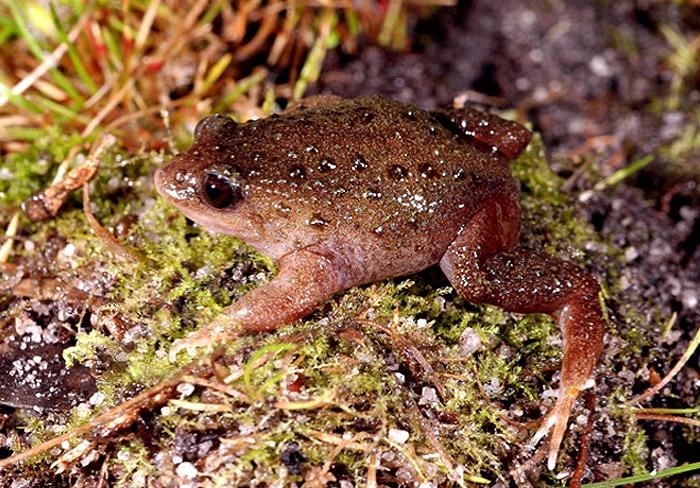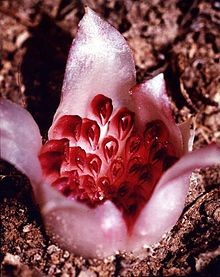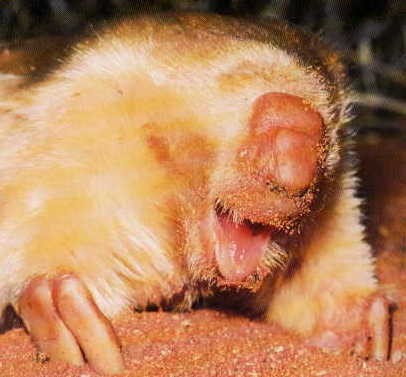For those who haven’t worked it out, September is Biodiversity Month and the 7th September is National Threatened Species Day. In my blog this month I have decided to focus on the less pretty and more unknown threatened species, I have chosen an amphibian, an orchid and mole.
Australia’s biodiversity is currently in decline; in Australia, more than 1,700 species and ecological communities are known to be threatened and at risk of extinction and each year this list increases. So, what exactly does it mean to be a threatened species? Specially protected fauna and flora are species which have been adequately searched for and are deemed to be, in the wild, either rare, at risk of extinction, or are otherwise in need of special protection, and have been gazetted as such.
Threatened species are categorised by the Wildlife Conservation Act 1950, these categories are: T=Threatened Species, CR= Critically Endangered Species, EN=Endangered Species, VU=Vulnerable Species, EX= Presumed Extinct Species, IA= Migratory Birds Protected under an International Agreement, CD= Conservation Dependent Fauna and OS= Other Specially Protected Fauna.
Amphibian – White-bellied Frog

Geocrinia alba, the White-bellied Frog, is considered ‘Critically Endangered’ on the IUCN Red List of Threatened Species. It is native to southwest Australia, residing between Blackwood and Margaret River. It occurs in Leeuwin-Naturaliste National Park, Forest Grove and Witchcliffe State Forests, as well as private land. The range of this species is 130 km2 but the area of occupancy is only 2.5 km2. The White-bellied Frog lives in permanently moist, swampy areas in drainage depressions. It breeds in spring and early summer and the females lay eggs in burrows. The eggs develop directly with no tadpole stage.
The current estimate in the wild is around 50 populations, most with less than 20 individuals (10 calling males). The total population is around 3,000 individuals. From genetic studies and mark and recapture studies, it seems that the different populations of White-bellied Frogs do not interbreed or travel far from their native swamps. Thus, there is high genetic diversity between populations, so extinction of any single population is a significant loss to the White-bellied Frog species.
Flora – Underground Orchid
Rhizanthella gardneri, the underground orchid, is considered to be an endangered species under the EPBC Act and DRF in WA, it is a small, succulent, tuberous herb found growing in two widely separated areas in the Wheatbelt region of Western Australia. The six known populations are located approximately 300 km apart in populations found between Corrigin and Bakabin, and northwest of Munglinup. Flowering in the northern populations occurs in mid-May to early June and in late June to mid-July in the southern populations. Land clearing for agriculture has resulted in habitat degradation and fragmentation as well as salinization, all threats to the Western underground orchid.

Degraded habitat is a current and continuing threat. Thickets of Broom Bush, that the Underground Orchid depends for its fungal nutrient link, are dying back from the edges due to drought and possibly rising saline water tables. The rising saline water tables are possibly already causing deaths amongst the associated Broom Bush and are likely to become an increasing future threat. Weed invasion is a minor threat to all populations. The effect of weeds is uncertain but they are likely to compete for soil moisture and nutrients needed by the orchid and associated fungi. Also, soil compaction, due to poor levels of leaf and bark litter and human disturbance, has resulted in poor flowering and possible deaths of Underground Orchid plants.
Fauna – Southern Marsupial Mole

Notoryctes typhlops, the Southern Marsupial Mole, was previously listed as Endangered, in 2016 the IUCN changed its classification to Least Concern and it was removed from the EPBC Threatened Species List. The change in classification is linked to an increase in knowledge on its occurrence. The Southern Marsupial Mole lives in the desert regions of Western Australia, northern South Australia (apart from records from the Fowlers Bay area near the SA coast) and the Northern Territory. Some researchers think that comparisons of past and present records are biased by the large numbers of specimens collected during early scientific expeditions. Overall, the number of specimens added to museum collections has not varied much this century.
Europeans first collected the mole from a pastoral station on the Northern Territory’s Finke River in 1888. It lives in the central sandy desert regions of Western Australia, northern South Australia (apart from records from the Fowlers Bay area near the SA coast) and the Northern Territory. So little is known about the species, that it is not even known how males find females for reproduction.
We all have a role to play in recovering Australia’s threatened species and ecological communities. It’s a task that relies on multiple partners, including federal, state and territory governments, NGO’s, the private sector and communities. By working together and pooling our efforts, we can be more effective and achieve long lasting outcomes in protecting and recovering Australia’s unique and diverse species.
If you need additional support with threatened species in your workplace or at home, do not hesitate to call Integrate Sustainability on 08 9466 0338 or email us at enquiries@integratesustainability.com.au.
